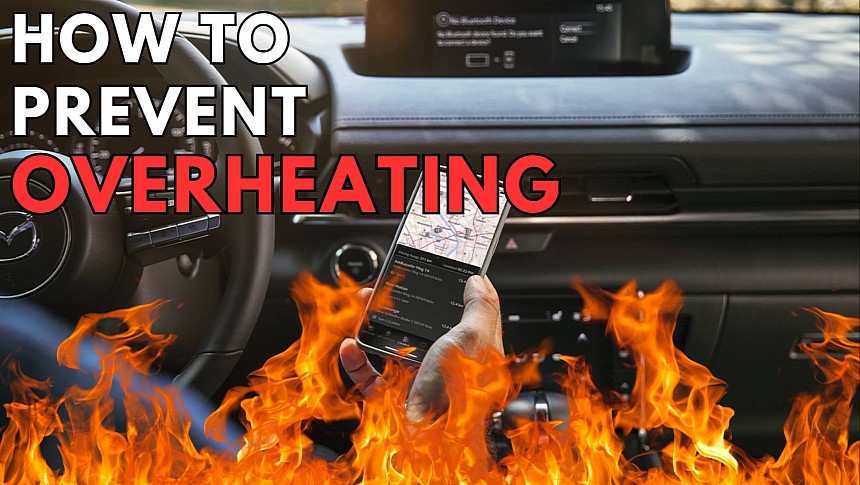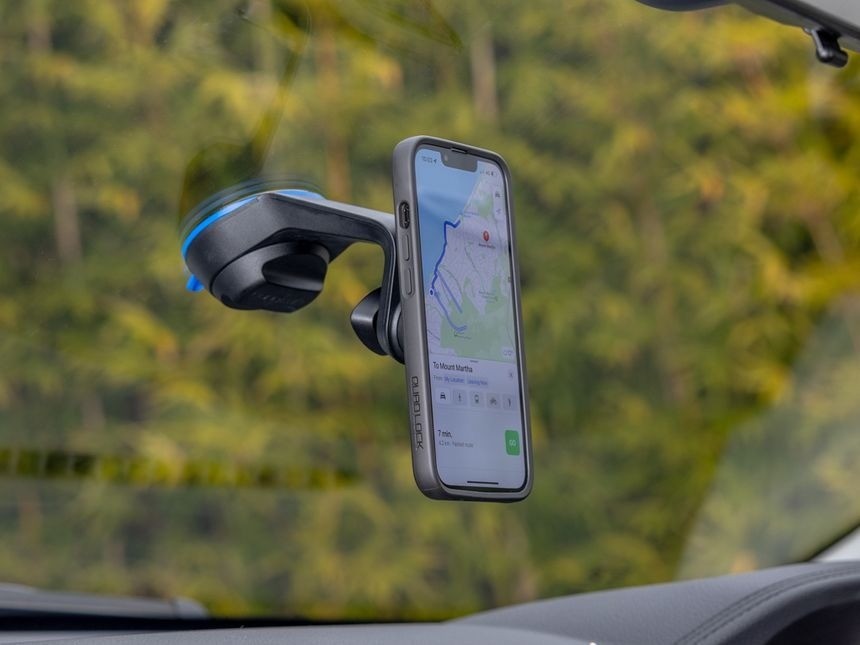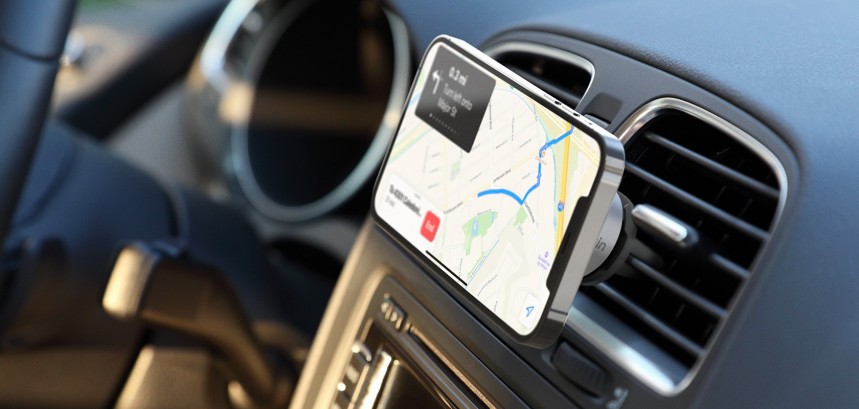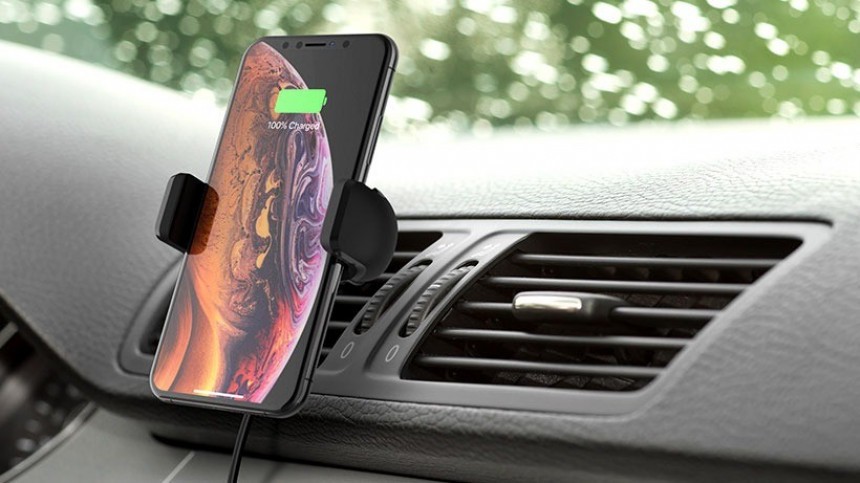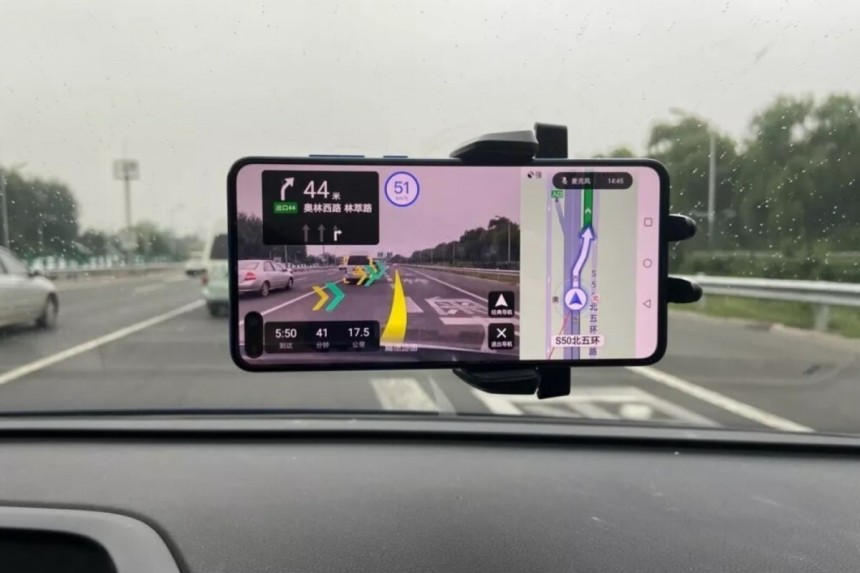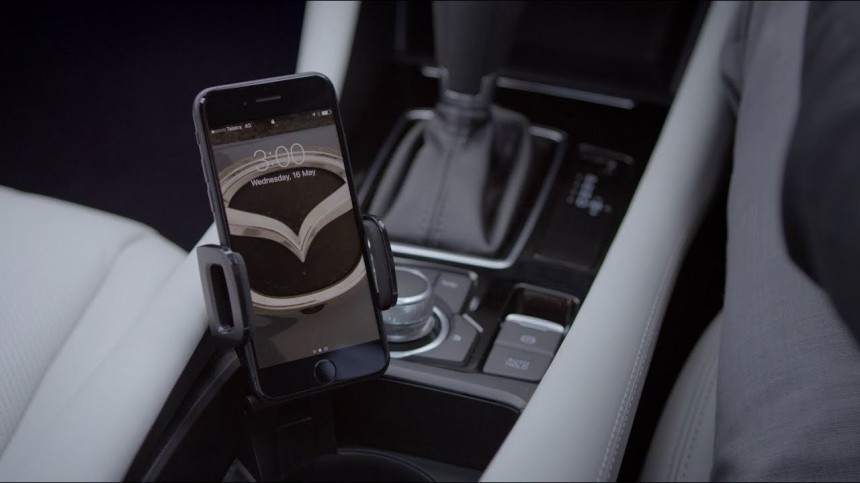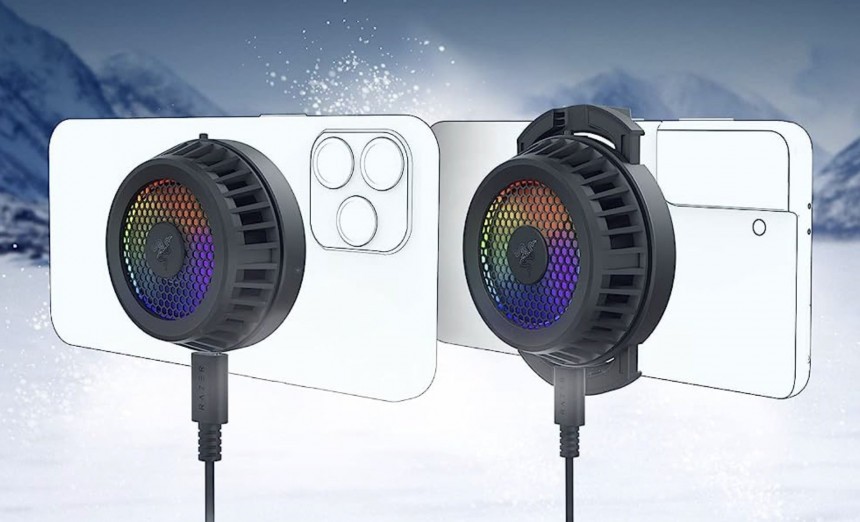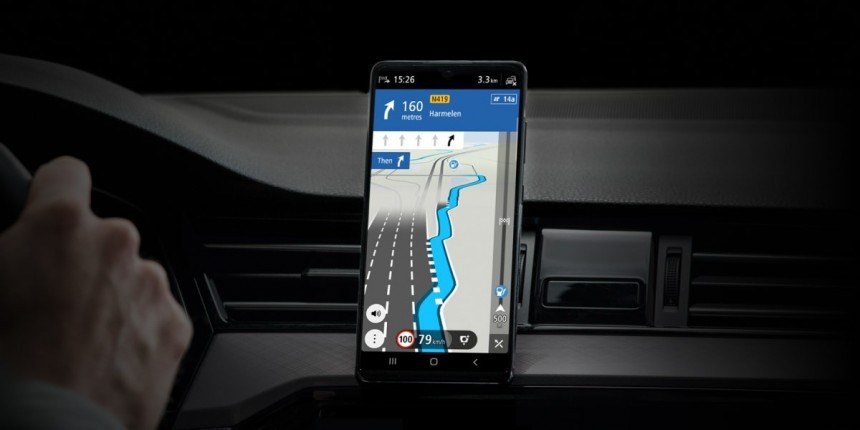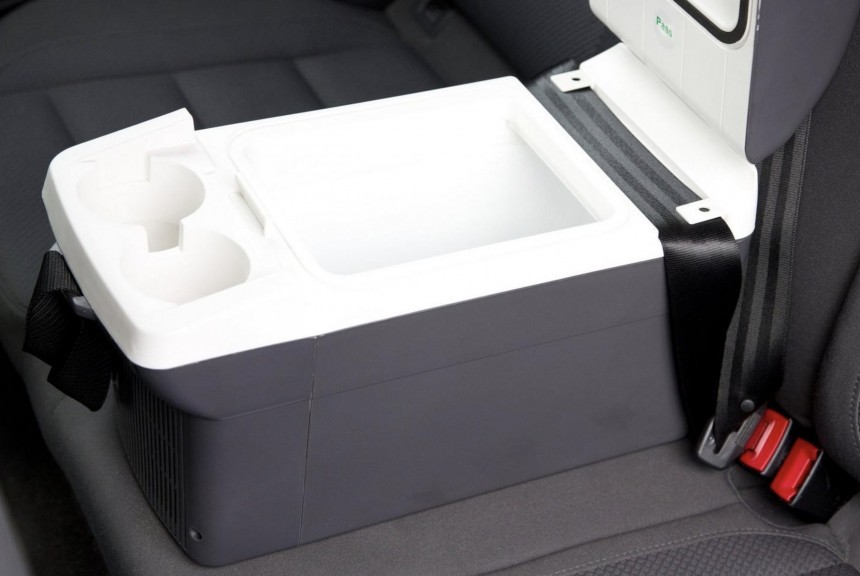Phones have become must-have driving companions for most drivers, especially in cars fitted with Android Auto and CarPlay.
The upgraded experience has significant benefits, including uninterrupted access to phone features without worrying about distraction. Google Assistant and Siri allow users to make phone calls, configure navigation, and play a specific song without looking at the screen.
These capabilities are available in a car with or without Android Auto and CarPlay. For example, connecting the mobile device to the vehicle's Bluetooth system allows drivers to listen to music using the car's speakers. The same applies to phone calls and navigation guidance.
The big drawback of relying on smartphones for essential driving capabilities is that mobile devices occasionally overheat, especially when running more demanding tasks. An application like Google Maps can become a very demanding process, as it uses the screen and the GPS sensor to generate turn-by-turn instructions. Overheating is likely if the mobile device is also plugged in for charging.
Keeping your phone cool is even more difficult during hot weather, so even a simple thing like playing a song on Spotify can lead to your Android phone or iPhone entering protection mode. Modern smartphones come with overheating protection systems, so they lock access to the device until they cool down.
Here are the easiest ways to avoid seeing this screen and keep your phone up and running while driving despite the outside temperature.
The major shortcoming is that the device is constantly exposed to direct sunlight.
A hot summer day means your phone spends its time in the car in sunlight, leading to additional heating problems. In addition to the running processes, which cause internal heating the device must deal with using its cooling system, the sunlight produces more heat the smartphone might fail to combat.
Installing the phone away from direct sunlight is highly recommended, especially on hot sunny days.
It's hot, so the car's air conditioning system keeps blowing cold air to cool the cabin. Mounting the phone to the air vent can help keep the device cool, even when running more demanding processes.
The car's air vent plays the same role as a laptop cooling stand. It produces external cooling, helping the internal cooling system keep everything at optimal temperatures.
Most phone holders come with dedicated air vent mounts, so look for a model that fits your mobile device, and you're good to go.
If you use the wired version of Android Auto or CarPlay, plugging the smartphone into the vehicle is necessary to run the phone projection system.
A wired connection also provides an extra battery charge, though most vehicle ports support slow charging speeds that can't guarantee a full battery when arriving at a destination.
Others use fast chargers to get their phone batteries to 100% before arriving at the destination. The faster the charger, the bigger the chances of causing excessive heat, so use a slow charger or don't use a charger at all, if possible.
Google Maps, Waze, Apple Maps, and other navigation apps offer audio guidance to help you reach the destination using the suggested route.
Most users prefer to keep the navigation app in focus on their mobile devices, but having the display on all the time could also lead to overheating.
Thanks to voice guidance, you can continue using navigation without having to look at the screen, so eventually, you can turn the screen off.
This method will also help prevent excessive heat without compromising the experience behind the wheel.
It may sound like a no-brainer for some readers, but keeping the phone in the back pocket, mainly if you use wireless Android Auto and CarPlay, could lead to overheating.
If you sit on your phone, the heat generated by your body, especially when getting into a hot car on a summer day, could cause device cooling issues, eventually producing excessive heat.
If possible, remove the phone from your pocket and leave it in the car in a place where it's not exposed to direct sunlight.
Similar to laptop coolers, phone coolers attach to your phone, and using integrated coolers, they blow cold air into the device.
An external attachment supports the internal cooling, so the smartphone should dissipate heat more efficiently. Such an accessory from a generic Chinese brand starts at about $20 and works with a simple USB connection (you can plug it directly into the USB port of your car or a dedicated charger).
Phone coolers work, but these devices don't do miracles, as they won't cool your smartphone if you keep it in direct sunlight. They were developed with gaming and video streaming in mind, so in theory, they can deal with hardcore processes running at the device level.
External factors, such as direct sunlight, could produce excessive heat that no external cooler could handle.
Running apps use the phone's resources, and the bigger the number of apps, the more resources they use. Eventually, the mobile device increases its processing power to deal with everything you throw at it, so it could easily get hot.
To prevent overheating, you can close all unnecessary apps. For example, you won't need any games while you drive a car, so shut them down until you arrive at the destination.
Keep only the essential driving apps running, such as Google Maps or Spotify if possible.
It might sound like we're getting ridiculous, but a cooling box helps maintain the proper temperatures for a mobile phone to work correctly in a car that spends the entire day in direct sunlight.
Cooling boxes don't have to be connected to power to do their magic, as a simple small sandwich-sized model can do its job.
Cooling boxes start at $10 for the most basic models, but if you want a super-advanced version that doubles as a refrigerator, be ready to spend at least $100.
Keeping the mobile phone cool on a hot summer day is more complicated than it sounds, mainly because these devices now handle essential tasks behind the wheel. A driver who uses their phone for navigation can't afford to have the device entering a locked state due to overheating, so turning to extreme workarounds, such as the cooling box suggestion, is sometimes the only way.
If you still can't deal with phone overheating in your car, here are some extra answers to the most common questions you could have in this regard.
Once you increase the number of apps, the smartphone uses more processing power to run them, eventually leading to excessive heat. Sometimes, this leads to overheating, so the mobile device enters a protection mode until it cools.
Another possible cause of device overheating is malware. Often referred to as virus infections, the malware hides in your smartphone using its resources for malicious tasks, such as mining for cryptocurrency. A virus infection can also download and run apps without the user knowing.
Removing the malware from a mobile device requires a security solution, but more often than not, the easiest solution is to reset the operating system and start from scratch. This method removes all compromised files from the device.
The excessive heat is a battery killer. If your phone runs at maximum power for an extended period, struggling with overheating regularly, the battery level will likely drop quickly. Eventually, the overheating also leads to premature battery degradation, so you might have to replace the battery faster than anticipated.
A new battery doesn't cost a fortune, but water resistance is the more significant concern. If someone breaks your device open (especially at a third-party store), the water resistance is likely compromised. Today's smartphones, such as the iPhones and high-end Android devices, come with an IP68 rating, and while you're not supposed to swim with them, they can withstand a splash of water just fine.
Samsung Galaxy Note 7, a device launched in 2016, was eventually recalled and discontinued by the South Korean phone manufacturer after it found that the phone could overheat and catch fire. A later investigation revealed a manufacturing defect affecting the battery.
Phones rarely catch fire due to overheating alone, but physical damage is very likely if this happens. In plain English, if you previously dropped the phone to the ground or it suffered some sort of bending, it's more likely to catch fire due to overheating.
If you run too many demanding apps or games, close them. If your device got infected with malware, get it cleaned.
If you stored the device in direct sunlight, remove it and give it a few seconds to cool. A phone working correctly typically needs one minute to return to optimal temperature.
If the cooling system works as expected, it's all just a matter of minutes until the device deals with the excessive heat.
If the smartphone experiences overheating during the hot temperature in the car, you can put it directly into the air vent. The cold air from the climate control system helps cool the mobile device much faster and prevents further overheating.
If you own a phone cooler, connect it when you notice the device is getting hot. Phone coolers work, but they're not as efficient as the car's air conditioning system blowing cold air directly into the smartphone. Many people wonder if they can put their mobile device into a refrigerator, and while this shouldn't pose any risk for the phone if you don't forget it in there, you'd better avoid this workaround altogether. A minute or two in the refrigerator helps cool the phone. Still, if you leave it inside for a full night, it could be exposed to external factors, such as humidity and low temperatures, causing other hardware problems.
If the smartphone is too hot and you can no longer hold it in hand (this might sound horrible, but it happened to me a few days ago), the best thing to do is to shut it down temporarily. This method automatically ends all running processes, eventually giving the internals enough time to cool.
At the same time, if the overheating is caused by a mix of running apps and malware, the device has enough time to recover and return to optimal temperatures, as everything is suspended. If the overheating returns without launching any apps when you restart the phone, you should scan it for malware because there's a good chance it got infected. This issue is more common on Android devices where sideloading is enabled, as Apple's walled garden only allows users to install apps from the official App Store. Most infected files, such as compromised apps, spread online bundled with APKs that users download from malicious sources and manually install on their devices. Once an infected app receives the necessary permissions, it can proceed with other operations, including downloading additional payloads and running apps in the background.
These capabilities are available in a car with or without Android Auto and CarPlay. For example, connecting the mobile device to the vehicle's Bluetooth system allows drivers to listen to music using the car's speakers. The same applies to phone calls and navigation guidance.
The big drawback of relying on smartphones for essential driving capabilities is that mobile devices occasionally overheat, especially when running more demanding tasks. An application like Google Maps can become a very demanding process, as it uses the screen and the GPS sensor to generate turn-by-turn instructions. Overheating is likely if the mobile device is also plugged in for charging.
Keeping your phone cool is even more difficult during hot weather, so even a simple thing like playing a song on Spotify can lead to your Android phone or iPhone entering protection mode. Modern smartphones come with overheating protection systems, so they lock access to the device until they cool down.
Here are the easiest ways to avoid seeing this screen and keep your phone up and running while driving despite the outside temperature.
Don't keep the phone in direct sunlight
Most people use phone holders installed on the dashboard or the windshield. The installation method makes it easier for drivers to look at the mobile device without taking their eyes off the road.
The major shortcoming is that the device is constantly exposed to direct sunlight.
A hot summer day means your phone spends its time in the car in sunlight, leading to additional heating problems. In addition to the running processes, which cause internal heating the device must deal with using its cooling system, the sunlight produces more heat the smartphone might fail to combat.
Installing the phone away from direct sunlight is highly recommended, especially on hot sunny days.
Mount the smartphone on an air vent
The car's air vent plays the same role as a laptop cooling stand. It produces external cooling, helping the internal cooling system keep everything at optimal temperatures.
Most phone holders come with dedicated air vent mounts, so look for a model that fits your mobile device, and you're good to go.
Charge only when necessary
A wired connection also provides an extra battery charge, though most vehicle ports support slow charging speeds that can't guarantee a full battery when arriving at a destination.
Others use fast chargers to get their phone batteries to 100% before arriving at the destination. The faster the charger, the bigger the chances of causing excessive heat, so use a slow charger or don't use a charger at all, if possible.
Use navigation with the display turned off
Most users prefer to keep the navigation app in focus on their mobile devices, but having the display on all the time could also lead to overheating.
Thanks to voice guidance, you can continue using navigation without having to look at the screen, so eventually, you can turn the screen off.
This method will also help prevent excessive heat without compromising the experience behind the wheel.
Don't keep the phone in the back pocket
If you sit on your phone, the heat generated by your body, especially when getting into a hot car on a summer day, could cause device cooling issues, eventually producing excessive heat.
If possible, remove the phone from your pocket and leave it in the car in a place where it's not exposed to direct sunlight.
Use a dedicated phone cooler
An external attachment supports the internal cooling, so the smartphone should dissipate heat more efficiently. Such an accessory from a generic Chinese brand starts at about $20 and works with a simple USB connection (you can plug it directly into the USB port of your car or a dedicated charger).
Phone coolers work, but these devices don't do miracles, as they won't cool your smartphone if you keep it in direct sunlight. They were developed with gaming and video streaming in mind, so in theory, they can deal with hardcore processes running at the device level.
External factors, such as direct sunlight, could produce excessive heat that no external cooler could handle.
Shut down all unnecessary apps
To prevent overheating, you can close all unnecessary apps. For example, you won't need any games while you drive a car, so shut them down until you arrive at the destination.
Keep only the essential driving apps running, such as Google Maps or Spotify if possible.
Get a cooling box
Cooling boxes don't have to be connected to power to do their magic, as a simple small sandwich-sized model can do its job.
Cooling boxes start at $10 for the most basic models, but if you want a super-advanced version that doubles as a refrigerator, be ready to spend at least $100.
Keeping the mobile phone cool on a hot summer day is more complicated than it sounds, mainly because these devices now handle essential tasks behind the wheel. A driver who uses their phone for navigation can't afford to have the device entering a locked state due to overheating, so turning to extreme workarounds, such as the cooling box suggestion, is sometimes the only way.
If you still can't deal with phone overheating in your car, here are some extra answers to the most common questions you could have in this regard.
What causes my phone to overheat?
In theory, every process causes a certain heat level, but the lighter the process, the easier the device handles it.Once you increase the number of apps, the smartphone uses more processing power to run them, eventually leading to excessive heat. Sometimes, this leads to overheating, so the mobile device enters a protection mode until it cools.
Another possible cause of device overheating is malware. Often referred to as virus infections, the malware hides in your smartphone using its resources for malicious tasks, such as mining for cryptocurrency. A virus infection can also download and run apps without the user knowing.
Removing the malware from a mobile device requires a security solution, but more often than not, the easiest solution is to reset the operating system and start from scratch. This method removes all compromised files from the device.
Is too much heat bad for my phone?
Yes. The heat affects the internal components, with the battery heavily impacted. Studies found regular overheating also leads to display issues, including ghosting and bleeding.The excessive heat is a battery killer. If your phone runs at maximum power for an extended period, struggling with overheating regularly, the battery level will likely drop quickly. Eventually, the overheating also leads to premature battery degradation, so you might have to replace the battery faster than anticipated.
A new battery doesn't cost a fortune, but water resistance is the more significant concern. If someone breaks your device open (especially at a third-party store), the water resistance is likely compromised. Today's smartphones, such as the iPhones and high-end Android devices, come with an IP68 rating, and while you're not supposed to swim with them, they can withstand a splash of water just fine.
Can my phone catch fire due to overheating?
You won't like the answer to this question. A phone has dedicated protections to prevent the worst-case scenario, but history has taught us they don't always work as expected.Samsung Galaxy Note 7, a device launched in 2016, was eventually recalled and discontinued by the South Korean phone manufacturer after it found that the phone could overheat and catch fire. A later investigation revealed a manufacturing defect affecting the battery.
Phones rarely catch fire due to overheating alone, but physical damage is very likely if this happens. In plain English, if you previously dropped the phone to the ground or it suffered some sort of bending, it's more likely to catch fire due to overheating.
How do I stop a phone from overheating?
The best way to do this is to determine the cause of overheating in the first place.If you run too many demanding apps or games, close them. If your device got infected with malware, get it cleaned.
If you stored the device in direct sunlight, remove it and give it a few seconds to cool. A phone working correctly typically needs one minute to return to optimal temperature.
How can I cool my phone?
The answer to this question is tied to the one mentioned above. If you already determined the cause of the overheating and resolved it, the easiest way to cool the phone is to give it a few minutes.If the cooling system works as expected, it's all just a matter of minutes until the device deals with the excessive heat.
If the smartphone experiences overheating during the hot temperature in the car, you can put it directly into the air vent. The cold air from the climate control system helps cool the mobile device much faster and prevents further overheating.
If you own a phone cooler, connect it when you notice the device is getting hot. Phone coolers work, but they're not as efficient as the car's air conditioning system blowing cold air directly into the smartphone. Many people wonder if they can put their mobile device into a refrigerator, and while this shouldn't pose any risk for the phone if you don't forget it in there, you'd better avoid this workaround altogether. A minute or two in the refrigerator helps cool the phone. Still, if you leave it inside for a full night, it could be exposed to external factors, such as humidity and low temperatures, causing other hardware problems.
If the smartphone is too hot and you can no longer hold it in hand (this might sound horrible, but it happened to me a few days ago), the best thing to do is to shut it down temporarily. This method automatically ends all running processes, eventually giving the internals enough time to cool.
At the same time, if the overheating is caused by a mix of running apps and malware, the device has enough time to recover and return to optimal temperatures, as everything is suspended. If the overheating returns without launching any apps when you restart the phone, you should scan it for malware because there's a good chance it got infected. This issue is more common on Android devices where sideloading is enabled, as Apple's walled garden only allows users to install apps from the official App Store. Most infected files, such as compromised apps, spread online bundled with APKs that users download from malicious sources and manually install on their devices. Once an infected app receives the necessary permissions, it can proceed with other operations, including downloading additional payloads and running apps in the background.
